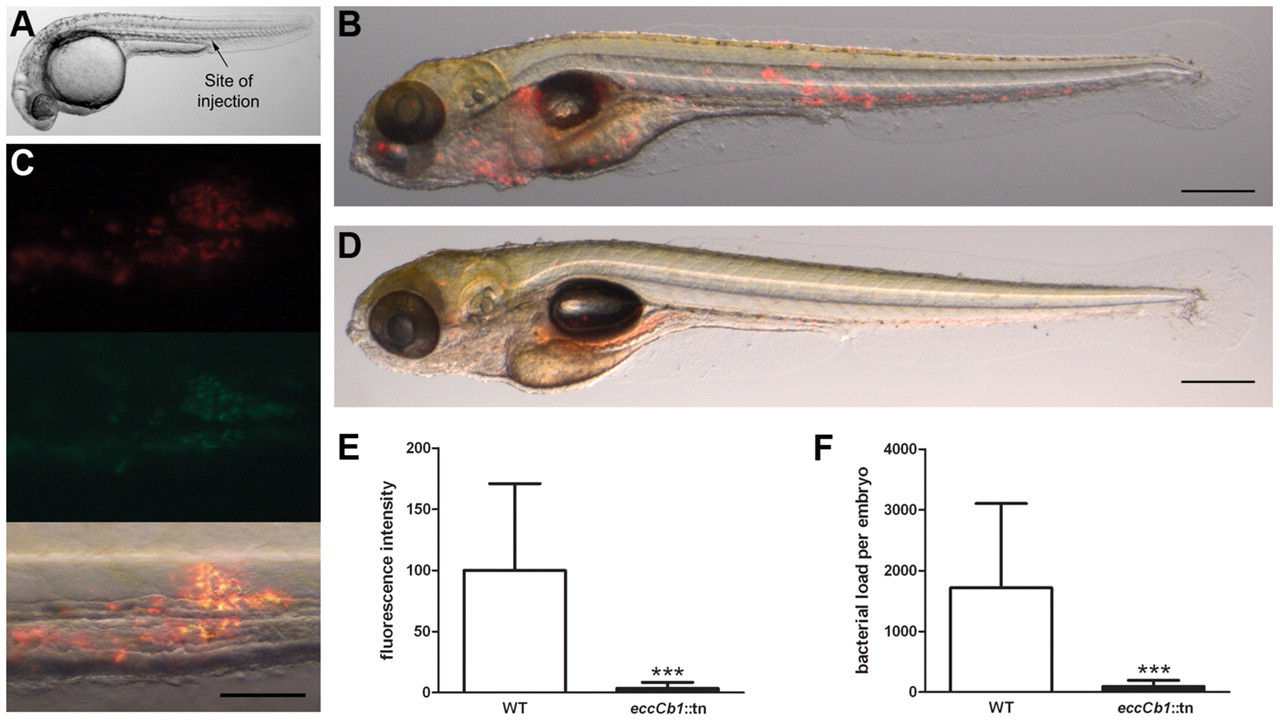Fig. 1 Initiation of granuloma formation in M. marinum E11 (Mma11)-infected embryos. (A) Overview of a zebrafish embryo at 28 hpf. The arrow indicates the caudal vein injection site used in this study. (B) Embryo 5 days after infection with 110 CFUs Mma11. Overlay of brightfield and fluorescent images is shown. Aggregates of red fluorescent bacteria are seen in the tail and head region. Scale bar: 500 μm. (C) Bacterial clustering in tail at 5 dpi with 92 CFUs Mma11 expressing hsp::DsRed and gap7::eGFP. Of the total amount of bacteria [constitutively expressing red fluorescence (top panel)], the majority expresses eGFP (middle panel), indicating that the bacteria reside in clusters that resemble granulomas. Overlay shows overlapping red and green fluorescence as yellow (bottom panel). Scale bar: 50 μm. (D) The Mma11 eccCb1::tn mutant is highly attenuated for initiation of granuloma formation at 5 dpi with 171 CFUs. Loose spots of red fluorescent bacteria are detected, but aggregates are not found. Scale bar: 500 μm. (E) Quantification of infection as determined with specially designed software. The amount of red (fluorescent) pixels of fluorescent images of embryos infected with the eccCb1::tn mutant is set as a percentage of the amount of red pixels of fluorescent images of embryos infected with wild-type bacteria (WT). Data shown are mean + standard deviation of three independent experiments (***P<0.001, unpaired Student’s t-test). (F) From embryos used in E, bacterial loads were determined by plating whole embryos (***P<0.001, unpaired Student’s t-test).
Image
Figure Caption
Acknowledgments
This image is the copyrighted work of the attributed author or publisher, and
ZFIN has permission only to display this image to its users.
Additional permissions should be obtained from the applicable author or publisher of the image.
Full text @ Dis. Model. Mech.

